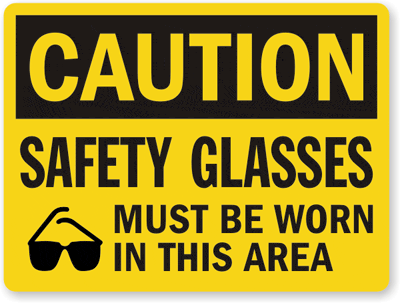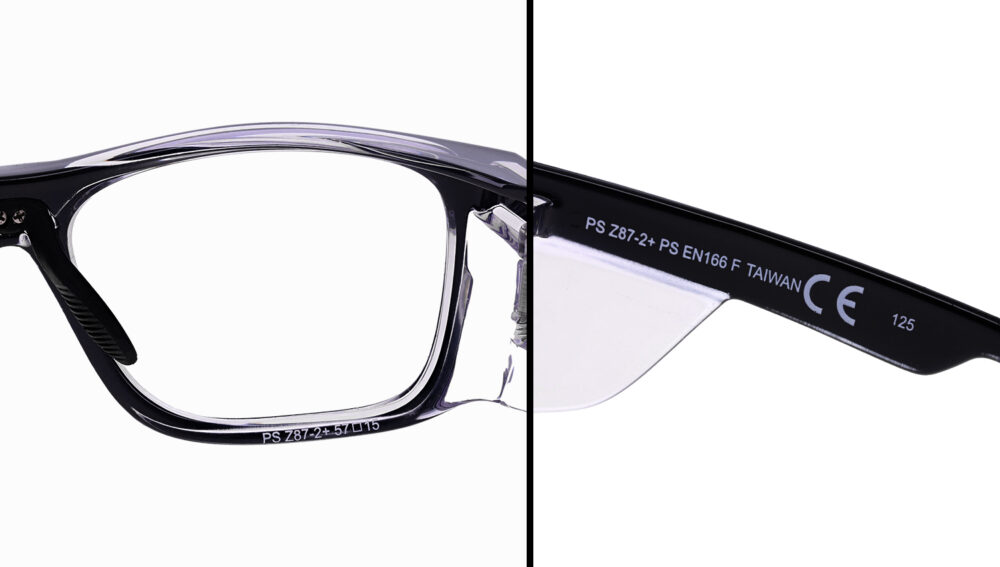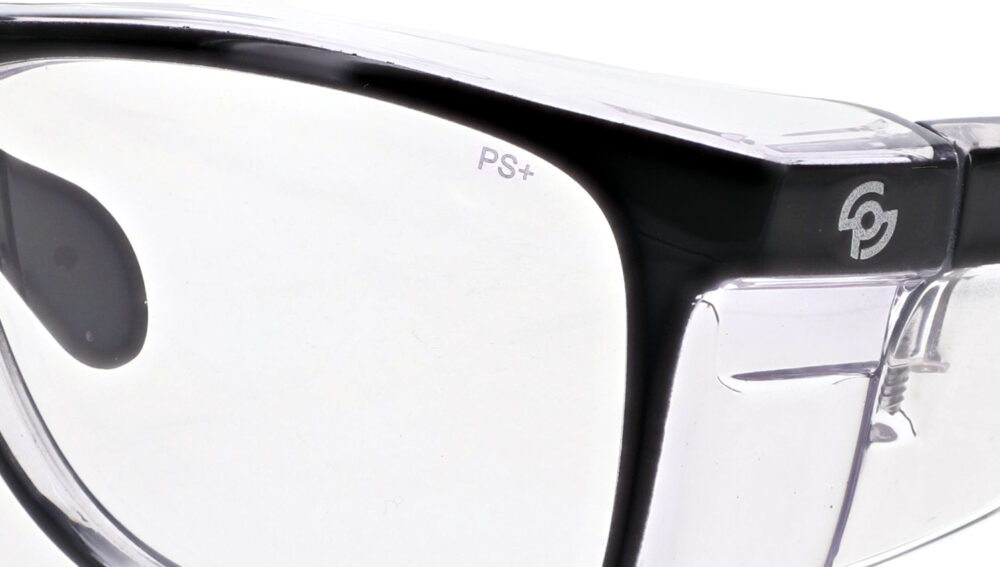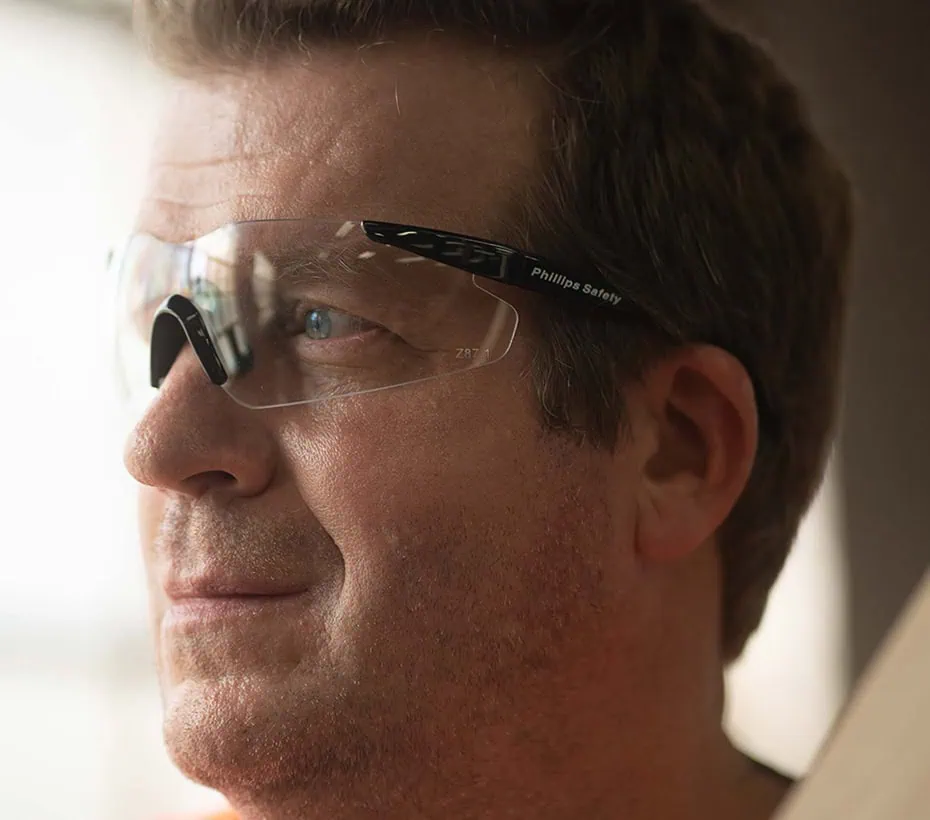


ANSI approved prescription safety glasses
Wearing the correct safety glasses can be beneficial to protecting your eyes. Sometimes when you get a pair of prescription safety glasses you see “ANSI” on the side of them…what does that…
ANSI Z87+ is the safety standard for high-impact protective eyewear set by the American National Standards Institute. It ensures that safety glasses and goggles meet strict performance criteria for protection in hazardous environments.

Z87+ marked eyewear must pass a high-velocity impact test using a ¼-inch steel ball traveling 150 feet per second. This ensures the lenses and frames can withstand sudden, powerful forces.

Frames are tested for durability under impact and stress. Only frames that don’t fracture or dislodge lenses qualify for the Z87+ mark.

Most ANSI Z87+ glasses include built-in or attachable side shields to protect against flying debris from multiple angles.

To avoid visual distortion, Lenses must meet ANSI standards for visual clarity, refractive power, and prism correction.

The lenses must match your RX within strict ANSI tolerances for prescription safety glasses and be made by a certified lab that submits materials for third-party testing.
Knowing whether your eyewear meets ANSI Z87+ standards is about checking the markings. Here’s what to look for:

The frame must be permanently marked “Z87+” marking on the inside of the temple arms and the nose bridge.

Non-prescription lenses will have a manufacturer’s mark—usually in the upper outer corner of each lens (for example, “PS” or “PS+” for high impact). Prescription lenses may not be marked, but the frame—typically on the inside of the temple arm or nose bridge—will read “Z87-2” or “Z87-2+” for ANSI compliance.
If you cannot find a “Z87” or “Z87+” marking on both the frame and the lenses of non-prescription safety glasses, your eyewear does not meet ANSI Z87.1 standards and should not be used in hazardous environments. For prescription safety glasses, look for “Z87-2” or “Z87-2+” on the frame—even if the lenses are not marked. If these markings are missing, the glasses are not certified for workplace safety.
ANSI Z87+ safety glasses are essential for anyone exposed to high-impact hazards or flying debris. If you’re in any of the following environments or activities, Z87+ eyewear isn’t just recommended—it’s necessary:
Construction Workers & Contractors: Protection from dust, wood chips, flying nails, and debris created by tools and demolition.
Steel Fabricators & Welders: Shielding against sparks, metal fragments, and grinding particles.
Paintball & Airsoft Players: Critical eye protection from high-velocity projectiles during gameplay.
Hunters & Sport Shooters: Defense against gun recoil, ejected shells, and outdoor debris.


To meet ANSI Z87+, lenses must be made from impact-resistant materials, such as:
Polycarbonate: Meets and Exceeds ANSI Z87+. It is the most common Lens used for High-Impact Safety Glasses; it is lightweight, strong, and UV-blocking.
Trivex: Meets and Exceeds ANSI Z87+. It has better optical clarity and Abbe Value than polycarbonate lenses and is used primarily in prescription safety glasses.

Prescription safety glasses must protect your eyes from hazards and meet strict ANSI optical tolerances to ensure they provide clear and accurate vision.
Here’s what that means:
ANSI Z87+ is simply a stricter version of the ANSI Z87.1 standard—it includes everything from Z87.1 but adds enhanced high-impact testing for more demanding environments. The requirements for optical clarity and prescription tolerances are the same across both standards, but Z87+ offers a higher level of protection when impact resistance is critical.



Wearing the correct safety glasses can be beneficial to protecting your eyes. Sometimes when you get a pair of prescription safety glasses you see “ANSI” on the side of them…what does that…



ANSI Z87.1 certification for prescription safety glasses plays a pivotal role in ensuring our eyes remain safe in the face of potential hazards. In a world where safety is paramount, especially in…



Eye and face protection are critical aspects of ensuring safety in various industries and activities. The American National Standards Institute (ANSI) plays a vital role in setting standards to safeguard against eye…
Stay on top of the latest news about prescription safety glasses, eyewear, sunglasses, and all the trends in the industry.
DISCOVER NOWBe the first one to know about promotion, new products, and more.
Follow Us On Instagram @rx_safety